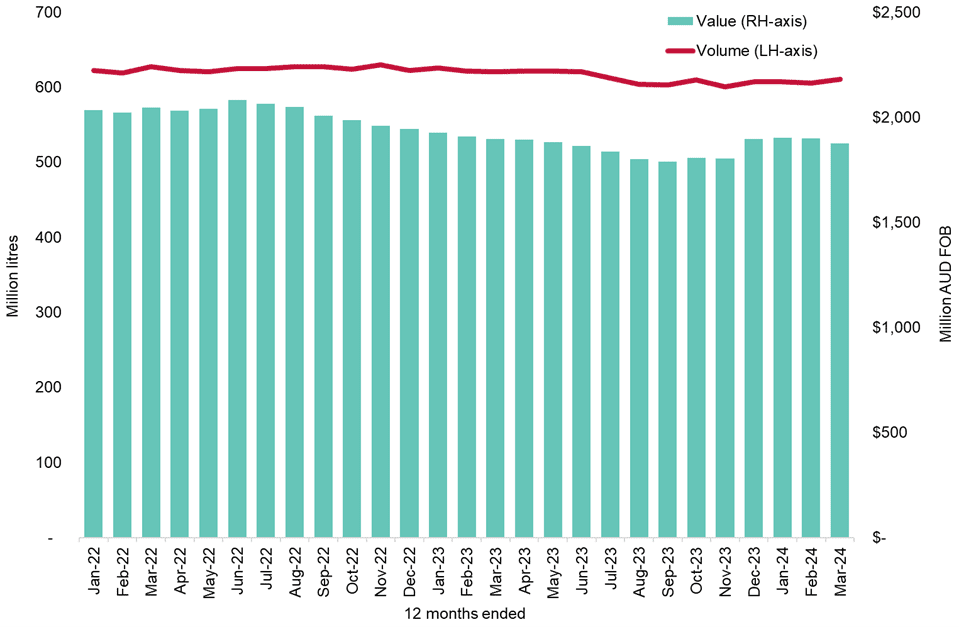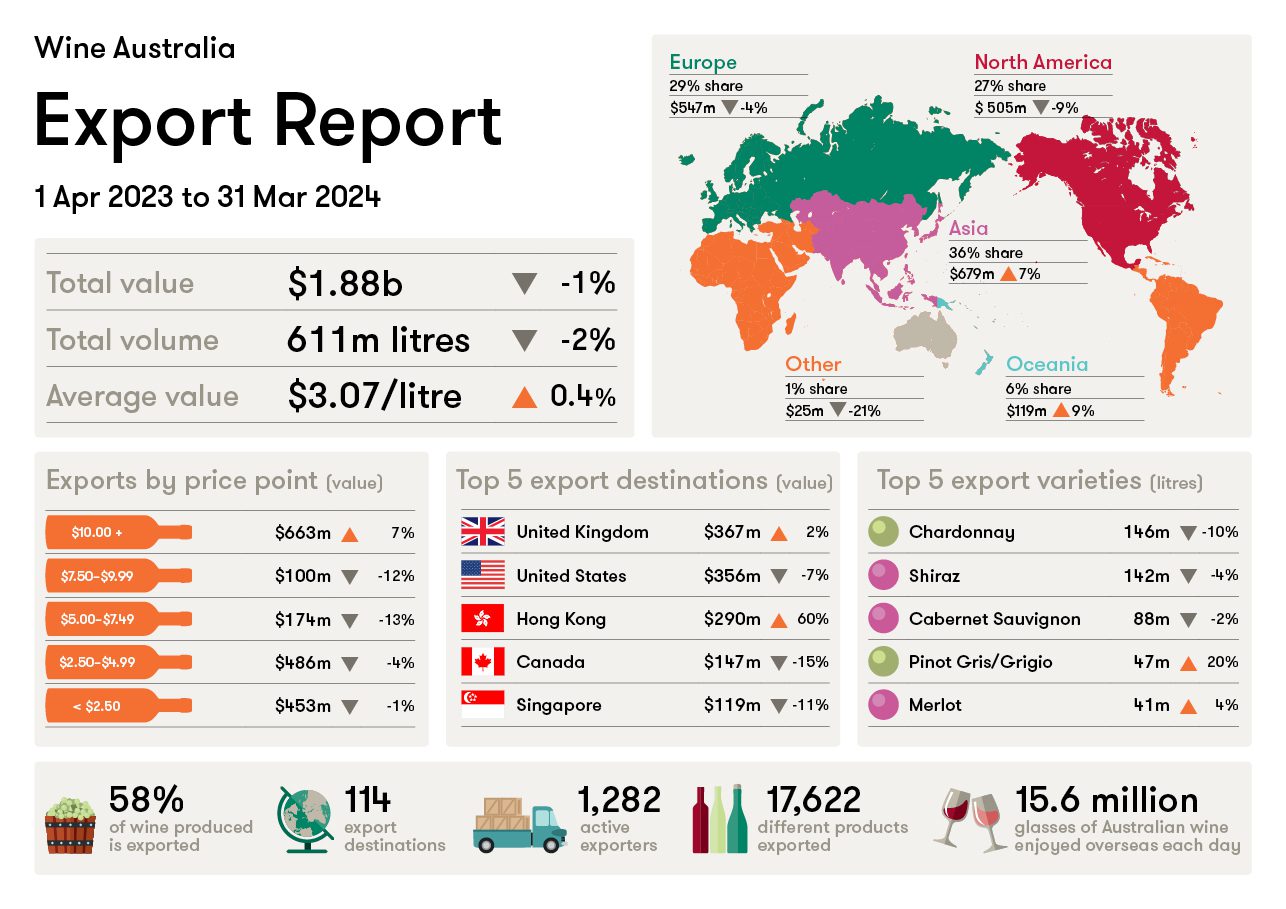
Australian wine exports declined by one percent in value to $1.88 billion and two percent in volume to 611 million litres in the 12 months to March 2024, according to Wine Australia’s Export Report.
Wine Australia says the latest figures reflect a “relatively stable” period for Australian wine’s overall export performance in recent times.
One of the biggest stories is Hong Kong, up 60 percent to $290 million – a 15 percent share of total export value.

Volume and value of Australian wine exports.
Wine Australia manager, Market Insights, Peter Bailey said that growth in some markets in Asia and Europe has been offset by a decline in exports to North America and, to a lesser extent, other destinations in Asia.
“The largest drivers of value growth in the past 12 months were Hong Kong, New Zealand and the UK, while exports to Canada, the US, Singapore, South Korea, Indonesia and Malaysia declined,” Mr Bailey said.
“While we expect volatility to continue at an individual market level, data from recent quarters suggest that overall declines have stabilised, and a more positive sales trajectory is ahead.
“Asia was the largest region by value for Australian wine exports, with a 36 percent value share.
“Strong growth in Northeast Asia – driven by Hong Kong – was tempered by a decline in the value of exports to Southeast Asia – driven by Singapore, Indonesia and Malaysia – during the period.”

Export value by destination region in 2024.
Australian wine exports to Northeast Asia increased by 29 percent in value to $412 million.
“The vast majority of the growth in Northeast Asia’s value was driven by exports to Hong Kong, which increased by 60 percent to $290 million, mainly in red wine above $10 per litre FOB. Hong Kong is a major trading hub and therefore some of the wine may be on-shipped to other Asian markets,” Mr Bailey said.
“Exports to Japan also grew during the period – up four percent in value to $48 million – mainly driven by exports valued between $2.50 and $4.99 per litre, but also above $10 per litre FOB.”
Mainland China experienced an uplift in the reporting period, growing 21 percent to $13 million but off a low base.
As the announcement by China’s Ministry of Commerce on the removal of the import duties imposed on Australian wine was made in late March, it has had little impact on the annual data in this report.
In the United Kingdom, Australian wine export performance has been positive in the past 12 months.
“The increasing value and volume of exports to the UK was likely being driven by an increase in customers opting to drink wine at home rather than in bars and restaurants, to save money during the cost-of-living crisis,” Mr Bailey said.
“Australia has a 24 percent share of all off-premise wine sales in the UK and is the number one country of origin in the category, so it benefits when consumers move towards this channel away from the on-premise.”
The decline in exports to the United States was entirely driven by unpackaged wine.
“During 2022 and the early part of 2023, unpackaged wine exports to the US surged as shipping conditions improved and Australian producers were able to ship large inventories into market,” Mr Bailey said.
“This trend has now eased, and total exports have declined as a result.
“Meanwhile, in Canada, the decline is driven by a continued decline in packaged exports, while the growth in unpackaged exports has also eased.”
Top five markets by value
- UK (up 2 percent to $367 million – 20 percent share of total export value)
- US (down 7 percent to $356 million – 19 percent share of total export value)
- Hong Kong (up 60 percent to $290 million – 15 percent share of total export value)
- Canada (down 15 percent to $147 million – 8 percent share of total export value), and
- Singapore (down 11 percent to $119 million – 6 percent share of total export value).
Top five markets by volume
- UK (up 10 percent to 228 million litres – 37 percent share of total export volume)
- US (down 13 percent to 127 million litres – 21 percent share of total export volume)
- Canada (up 2 percent to 74 million litres – 12 percent share of total export volume)
- New Zealand (up 6 percent to 30 million litres – 5 percent share of total export volume), and
- Germany (down 5 percent to 26 million litres – 4 percent share of total export volume).









Recent Comments